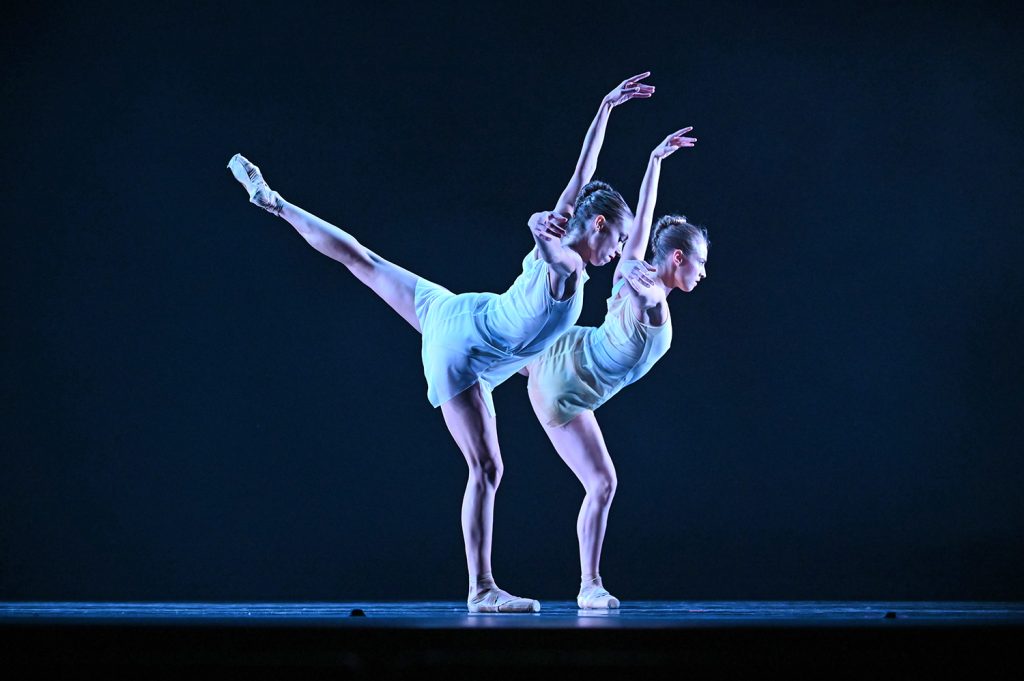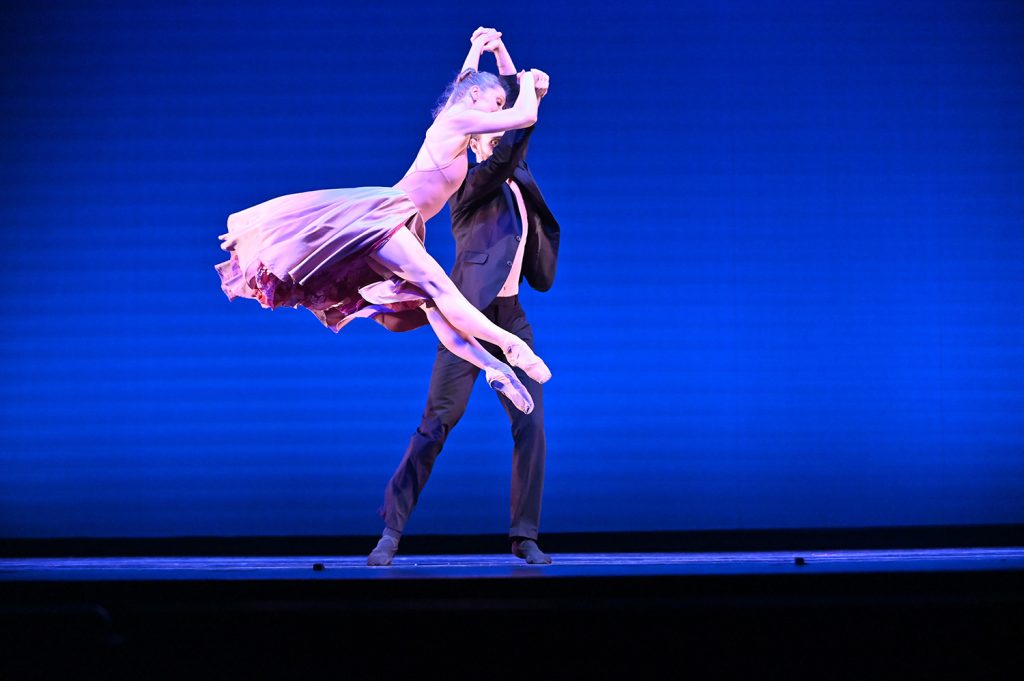
By Jasmine Jenkins | Special to the NB Indy
The National Choreographers Initiative, founded by Corona del Mar resident Molly Lynch in 2004 as a way to give choreographers the time and resources to experiment, celebrated its 20th annual performance on Saturday, July 27 at the Irvine Barclay Theatre.
Throughout the evening, Lynch provided details about NCI, its purpose, and its process. Every year, 16 professional dancers from ballet companies throughout the United States and four choreographers meet at the University of California, Irvine for three weeks, during which they rehearse eight hours per day, six days a week.
The goal at the end of the three weeks is not to have a finished product; instead, NCI is a laboratory for choreographers to innovate with an open-ended, collaborative approach. After the three weeks are over and the choreographers showcase their work, they can take these ideas elsewhere and develop them further.
Before the first performance, Oklahoma City Ballet rehearsal director and choreographer DaYoung Jung introduced herself and her piece. The number, titled “Fleeting,” represents how “each and every breath we take, every moment we experience, and every day we live comes and goes in the blink of an eye, just like a fleeting moment,” said Jung.
Jung also gave the audience a glimpse into her creative process, revealing that she came to Irvine with an open book, wanting to push herself as a choreographer and “take advantage of the space, time, dancers [she] had.”
Through a mixture of classical ballet technique and contemporary movement, Jung’s choreography captured the sense of passing time and the fleeting yet precious moments that make up our lives.
Donna Salgado, whose pieces were next, initially brought only one piece to the intensive. This dance, “Aurora Movement Spells,” was inspired by “this vision for a ballet about a community that was so connected to nature that when they danced, their movements produced auroras in the sky.”
Her second piece, “Estrellitas y Rosas,” came about organically when Salgado played one of her father’s favorite albums for the dancers.
“Aurora Movement Spells” took a less contemporary approach compared to “Fleeting” while still incorporating the fluidity and ethereality of the aurora borealis. The combination of bachata, a genre of Latin music, and ballet worked delightfully in “Estrellitas y Rosas,” resulting in a playful homage to Salgado’s childhood.

After a brief intermission, Los Angeles-based choreographer Cherice Barton, whose background consists of a diverse array of projects, wanted to reference her varied career while returning to her roots as a ballet dancer. The dance she created, “Swipe,” was a theatrical, almost satirical commentary on modern-day romance, with a clear vision and a sense of humor.
Charles Askegard, rehearsal director at the Philadelphia Ballet and the final choreographer of the evening, was inspired by the music he chose to choreograph to. Violin Sonata No. 1 showcased three duets and a trio in the first three movements before all eight dancers reunited for the final moments of the production. The dramatic red costumes highlighted Askegard’s choreography beautifully.
Following Askegard’s piece and a rousing round of applause for everyone involved, Lynch and the choreographers remained onstage for a Q&A panel, where they answered questions about the show, further explaining the open-endedness of the initiative and what their future plans are for the pieces they created.
For more information, visit http://www.nchoreographers.org.
